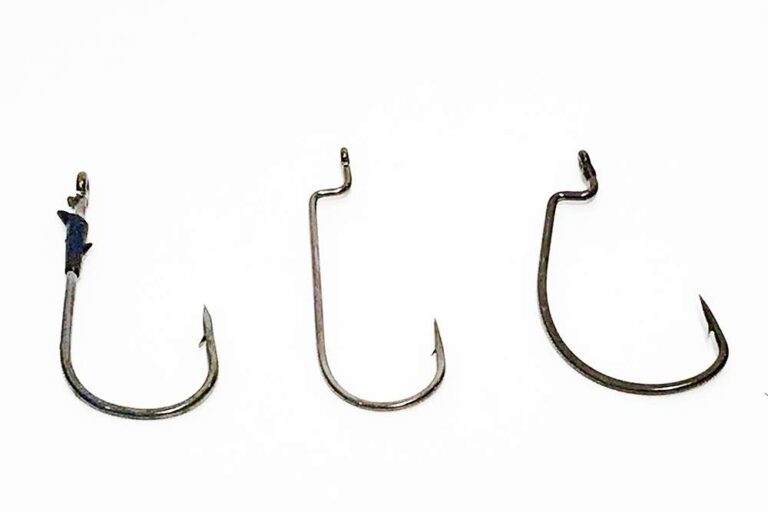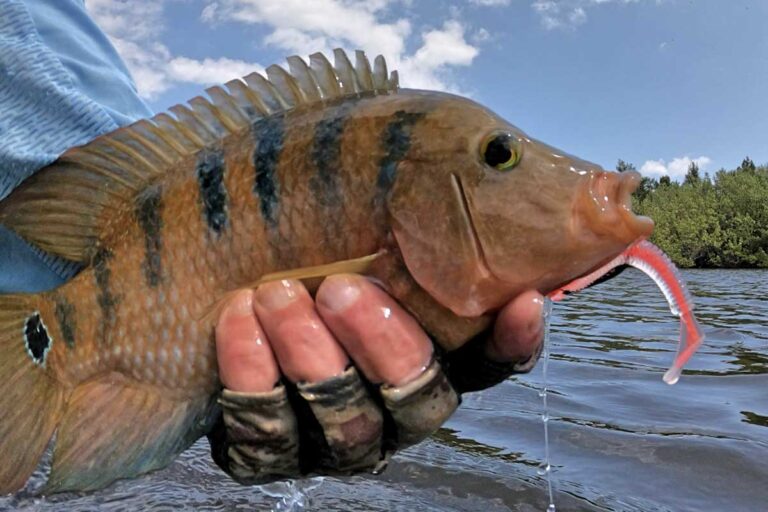How to Fish for Tiger Muskie
To fish for Tiger Muskie, use jerkbaits, crankbaits, surface baits, and spinnerbaits as they attract attention with a flashy and noisy presentation, covering water quickly. Successful Tiger Muskie fishing requires making as many casts as possible and covering a lot of water to increase your chances of catching them.

Credit: addicted.fishing
Introduction To Tiger Muskie Fishing
Tiger muskie, a hybrid fish with a mix of northern pike and muskellunge, is a popular sport fish attracting many anglers. Recognizable by its unique markings and powerful build, tiger muskie fishing has gained traction due to the thrill and challenge it offers.
Anglers are drawn to the mystery and the quest to land this elusive trophy fish. The daunting task of outsmarting this apex predator keeps the adrenaline pumping. The popularity of tiger muskie fishing continues to rise as more anglers seek the rush of battling this fierce and cunning species.

Credit: wildlife.utah.gov
Fishing Gear And Techniques
To successfully fish for Tiger Muskie, it is important to have the right gear and use effective techniques. When it comes to choosing the best gear for Tiger Muskie fishing, it is recommended to have jerkbaits, crankbaits, surface baits, and spinnerbaits in your arsenal. These lures are flashy and produce noise, attracting the attention of Tiger Muskie. It is also important to choose the right bait depending on the conditions and the preferences of the fish. When it comes to fishing techniques, making multiple casts and covering a lot of water is key. Tiger Muskie like to use ambush points, so focusing on hiding places can increase your chances of a successful catch. Remember to always handle the fish with care and release them properly to preserve the population. Good luck!
Catching And Handling Tiger Muskie
When it comes to catching and handling Tiger Muskie, it’s important to follow proper hook removal and handling techniques. To ensure a successful catch and release, here are some tips:
- Use barbless hooks to minimize injury to the fish.
- Handle the fish with wet hands or a wet cloth to protect its slimy coating.
- Support the fish’s body properly to avoid causing stress or harm.
- When removing the hook, do it quickly and gently to minimize trauma.
- If the hook is deeply embedded, consider cutting the line rather than causing further damage.
- When releasing the fish, place it in the water facing upstream and allow it to swim away on its own.
- Never hold the fish by its gills or eyes, as this can cause severe injury.
- Remember, Tiger Muskie are a valuable resource, so handle them with care to ensure their survival.
By following these tips, you can enjoy a successful catch and release experience while protecting the Tiger Muskie population.

Credit: flylordsmag.com
Preferred Habitats And Locations
Preferred Habitats and Locations: Tiger muskies are known to be elusive and prefer specific habitats and locations for hiding. Identifying ambush points is crucial for targeting these predatory fish. Anglers should focus on finding tiger muskie hiding spots with dense vegetation, submerged logs, and deeper waters.
When looking for the best fishing locations for tiger muskie, it’s essential to explore areas with adequate cover and structure. Additionally, targeting areas with abundant prey fish populations can increase the chances of a successful catch. Understanding the preferred habitats and locations of tiger muskies is vital for a productive fishing expedition.
Tips And Strategies For Success
When it comes to fishing for tiger muskie, it’s important to experiment with different setups to find what works best. This includes choosing the right depth for lures. Tiger muskie can be found at different depths depending on the time of year and water conditions, so it’s essential to adjust your setup accordingly.
Special considerations should also be taken into account when fishing for tiger muskie. These fish are known for their aggressive nature and can be challenging to catch. Using flashy and noisy lures such as crankbaits, jerkbaits, and spinnerbaits can attract their attention. It’s also important to have the right gear, such as pliers, to handle the muskie safely.
Frequently Asked Questions Of How To Fish For Tiger Muskie
What Bait Is Best For Tiger Muskie?
The best bait for tiger muskie includes jerkbaits, crankbaits, surface baits, spinnerbaits, and noisy, flashy lures.
How Do You Fish For Tiger Muskie?
To fish for Tiger Muskie, use jerkbaits, crankbaits, and spinnerbaits as lures. Cover as much water as possible and focus on ambush points where muskies hide. Use flashy and noisy lures to attract their attention. When catching, handle them carefully and release them promptly.
What Is The Best Setup For A Tiger Muskie?
The best setup for a tiger muskie includes using crankbaits, jerkbaits, spinnerbaits, bucktails, plugs, and topwater baits. These lures are flashy, produce noise, and attract the attention of tiger muskies. Additionally, making many casts and covering as much water as possible increases the chances of catching a muskie or tiger muskie.
What Do Tiger Muskie Bite On?
Tiger muskie bite on crankbaits, jerkbaits, spinnerbaits, bucktails, plugs, and topwater baits. These lures should be flashy and produce noise for effectiveness.
Conclusion
Fishing for tiger muskie requires patience, persistence, and the right equipment. By using the appropriate lures and techniques, anglers can increase their chances of a successful catch. Making use of crankbaits, jerkbaits, and spinnerbaits, as well as covering as much water as possible, are key strategies for a fruitful fishing experience.





